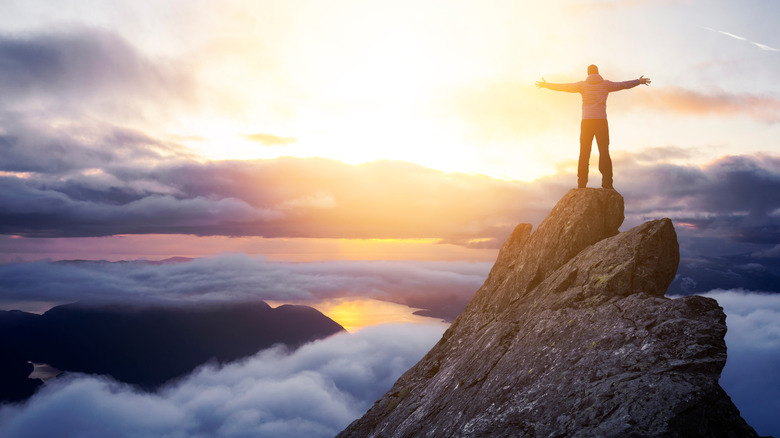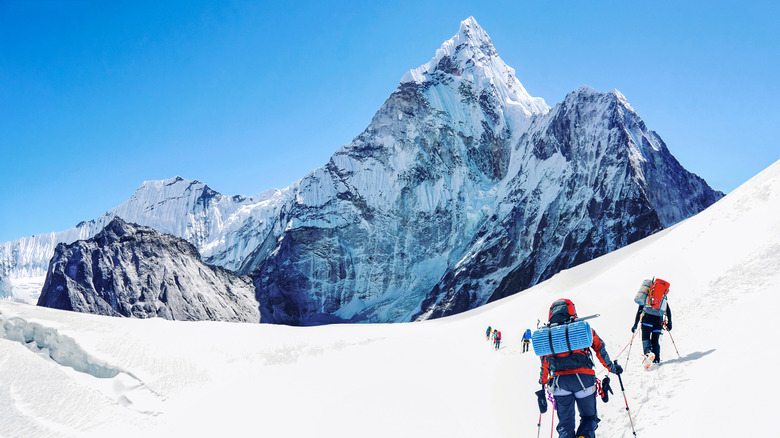Climbing Mount Everest Takes A Lot Longer Than You Realize
According to CNBC Travel, climbing Mount Everest is the third most-searched bucket list item worldwide. There's no denying the allure. The lush peaks of Everest tower 29,032 feet in the sky, making it the highest land mountain on Earth (via Britannica). The infinitely growing mountain is high in altitude but low on oxygen, making for a particularly perilous trek. According to National Geographic, when taking conditions like height, oxygen, and vulnerability to frostbite into account, thrill-seeking climbers have about a one in 100 chance of dying on the journey using one of the 17 commercialized routes.
If you are one who laughs in the face of frostbite and throws things like oxygen to the wind, you might still be intrigued at the idea of climbing Mount Everest. In this case, you better clear your calendar. This is one hike that takes a heck of a lot longer than you probably expect.
It takes a little over two months to climb Mount Everest
Climbing Mount Everest is certainly not something you'd want to sign up for on a whim. This is a full-fledged commitment lasting longer than most average workers' vacations. Holiday Nepal Trek reports that the entire expedition, from trekking to acclimatizing to core climbing, takes about 64 days to complete.
What will adventure-loving mountaineers be doing for those 64 days?
Well, they will spend about 44 of those days just straight up climbing, if you can imagine that. Eleven more days are allocated for trekking, a grueling process that requires navigating the wilderness region between Lukla and Everest Base Camp prior to ascent and following descent of the notorious mountainside. Another week or so is dedicated to getting mountain climbers acclimated to the conditions. Energetic climbers are encouraged to use this week to engage in other extreme sports, in case trekking through a forest and climbing up and down a mountain for two-plus months isn't enough.

